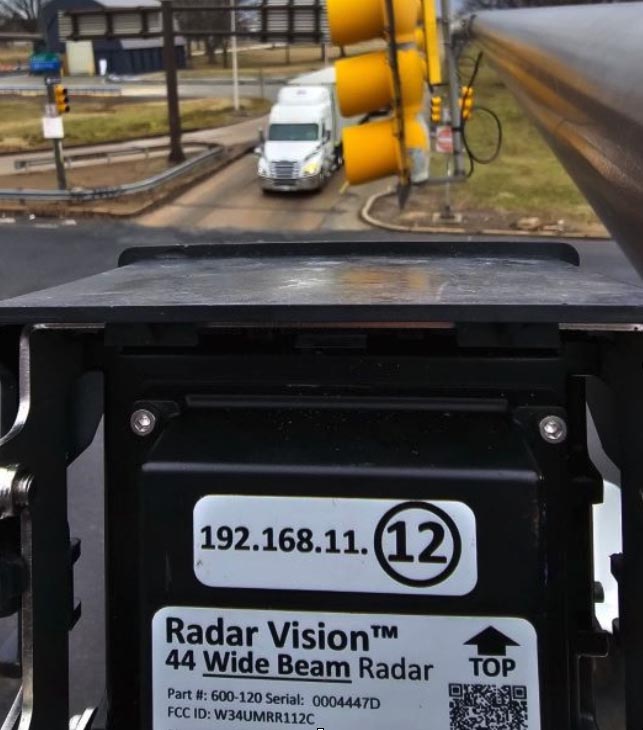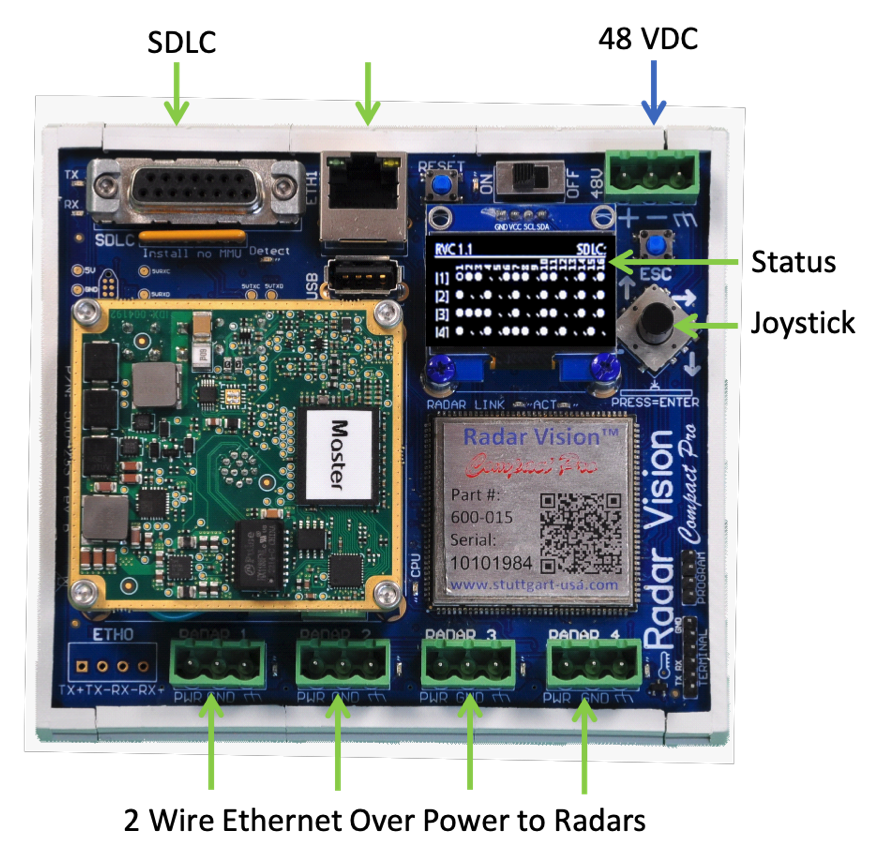- Home
- Radar Detection
Radar Vision™

The Radar Vision™ Compact Detection is a small form factor, fully integrated and simple to install 4D high-definition radar detection solution incorporating:
- 6-8 lanes
- Stop bar & advance detection
- Dilemma zone
- NTCIP 1209 counting
- Queue triggers
Key Features
- 700 Ft range
- TS2 & ATC with 120 channels
- 2-Wire ethernet over 48V wiring to 900 ft
Why Choose Radar Over Cameras?
The advancements in A.I. have significantly enhanced both cameras and radars, with the radars seeing even greater improvements. Imaging radars now rival cameras by offering precise measurements of distance, vehicle type, and speed—details that cameras miss. Moreover, while cameras have a range of up to 200 feet, radars extend up to 1000 feet, enabling earlier anticipation of traffic patterns and potential collisions. It’s reasonable to assert that modern radars outperform cameras as traffic monitoring tools.
How easy is it to setup and use?
Initially, radars were challenging to install due to the invisible radar field to human eyes. However, we’ve addressed this by converting radar detections into visual data, greatly simplifying the setup process. Our design requires just two connections for both data and power and a single unit that integrates directly into SDLC within the control cabinet, making the installation and maintenance straightforward. Our philosophy is that if a product requires a manual or training, it’s not yet simple enough.

How reliable is it?
Radars are more reliable than anything else you have in the traffic cabinet. They do not produce considerable heat, have no optics, no parts that deteriorate in weather, and no parts that has a limited lifespan.
Can it offer advanced pedestrian safety features comparable to cameras?
Radars excel beyond cameras in improving pedestrian safety by accurately differentiating between pedestrians and vehicles with remarkable precision. This accuracy is sustained even under poor visibility conditions—a scenario where cameras often struggle. With the ability to precisely gauge speeds and deceleration up to 600 feet away, radars cover a more extensive area. This capability allows for the early prediction and prevention of potential collisions, enhancing safety measures efficiently and promptly
What about information security and privacy?
Camera systems at traffic signals are often targeted because it produces personally identifiable information. Radar is a preferable choice where privacy and security is a concern.
Are radars environmentally friendly?
Radars typically consume less than 20% of what video detection consume, making them an environmentally friendly and cost-effective option for long-term deployment in traffic monitoring and safety applications.
